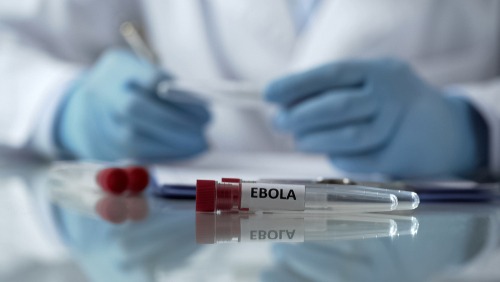
Researchers at the U.S. Department of Homeland Security (DHS) Science and Technology Directorate’s National Biodefense Analysis and Countermeasures Center (NBACC) have successfully designed and conducted a study to optimize methods for collecting and measure small amounts of the Ebola virus in the air.
According to the DHS, the study was needed to determine whether or not the virus was airborne and posed a greater risk of transmission from unknowingly infected persons. Typically, once an infected person starts showing symptoms of the disease, they are already shedding the virus, DHA said.
“Ebola can be both a national security and public health concern,” explained Lloyd Hough, who leads S&T’s Hazard Awareness and Characterization Technology Center. “We’re looking forward to applying these methods to better characterize the risks associated with Ebola virus and are hopeful that others can benefit from these techniques as well.”
NBACC researchers assessed and compared multiple devices designed for collecting microorganisms in the air. Their research found that filters made of gelatin were the best for collecting the virus from the air and were also the easiest and safest type of sampling device to use.
“Our ability to detect Ebola virus in air samples at levels that are ten-fold lower than what was possible with previous methods will enable us to provide a better understanding of the aerosol hazard posed by this virus,” said Mike Schuit, an investigator in the Aerobiology group at NBACC.
The new methodologies developed by the NBACC researchers, and the data collected from the associated studies, will be useful in studying the minimum amount of Ebola virus that needs to be inhaled to cause infection or death and will also help determine whether or not infected animals produce aerosols containing the virus when they breathe.
This information will be used by DHS, the Department of Defense, and the Department of Health and Humans Services to conduct hazard modeling and gain a better understanding of the risks airborne transmission of Ebola poses and how it may impact health workers.
NBACC researchers will also take the lessons learned from the response to the Ebola virus and apply them to studies with the SARS-CoV-2 virus, the virus that causes COVID-19, including studying the performance of aerosol samplers with the SARS-CoV-2 virus and optimization of methodologies to detect small quantities of the virus in the air. In partnership with the National Institute for Allergies and Infectious Diseases, researchers will study how much of the virus is needed to start a new infection when aerosol particles containing the virus area are inhaled.




